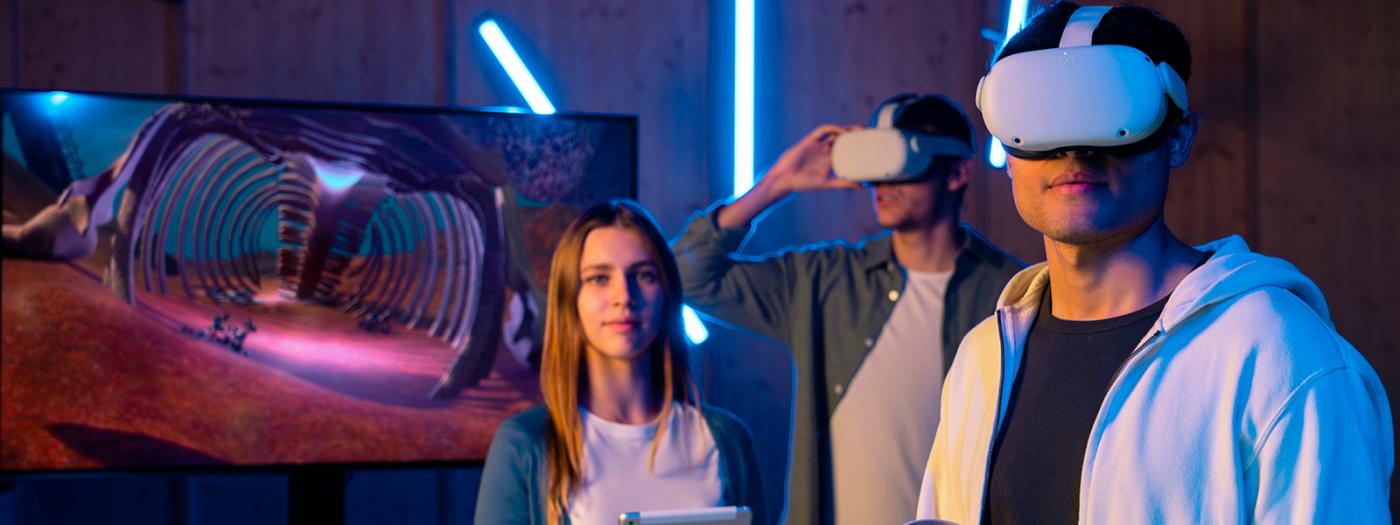Titular Professors
Basic knowledge of 3D modeling, Unity, and programming in C# (or similar, such as C or C++). A good level of English is also recommended to check much of the documentation available on the internet.
G - 1 Ability to analyze and synthesize.
G - 2 Ability to organize and plan.
G - 3 Basic general knowledge about the area of study.
G - 8 Information management skills (ability to search and analyze information from various sources).
G - 9 Problem solving.
G - 14 Teamwork.
G - 22 Ability to apply knowledge in practice.
G - 23 Research skills.
E - 14 Make animations.
E - 15 Designing multimedia applications.
E - 16 Programming multimedia applications.
E - 18 Design the architecture of the multimedia system.
E - 24 Provide technical support in different environments.
E - 25 Edit still and moving image content.
E - 35 Define and monitor the technical effectiveness of a project.
E - 52 Ability to analyze dynamic and mechanical systems.
E - 53 Knowledge of basic simulation tools that support computer techniques for the design of moving bodies.
1. Introduction and History of Virtual Reality as a field of study, implementation and research. (1 session)
2.VR, 3D interaction and controller inputs. (2 sessions)
3. Assisted work in a Virtual Reality project. (5 sessions)
4.AI, Neural networks, trainings and GPT (1 session)
5.Introduction to Mixed Reality (1 session)
6. Assisted work in a Mixed Reality project (3 sessions)
The subject Intelligence, reality and virtuality will work within the framework of the NCA. It will consist of three intensive seminars that will explore the fundamentals and creation of projects in VR and AR, as well as the basics of AI. Each seminar will focus on a specific domain, allowing students to gain practical skills in creating virtual and augmented environments, as well as understanding the applications and possibilities of these technologies.
In addition to the seminars, there will be a workshop dedicated to collaboration and group project planning. Students will learn how to work effectively as a team, plan their tasks, and distribute work equitably. to achieve the established objectives.
At the beginning of each class, there will be a welcome section, where students will have the opportunity to ask questions and the contents that will be discussed during the session will be introduced.
Each class will culminate with a closing section, where it will be reviewed if the objectives set for the session have been achieved and possible pending aspects that can be addressed at home will be discussed. In addition, students will be given the opportunity to solve any doubts they may have.
A key feature of this subject will be the promotion of the construction of students' thinking. They will be challenged to come up with meaningful projects and to seek solutions to achieve them. In addition, self-regulation will be encouraged through project checkpoints, allowing students to adapt the scope of their work as they progress.
Finally, the projects that students develop must have a social dimension and solve a real problem, ensuring that the characteristics of knowledge are translated into concrete and relevant solutions for society.
This subject offers an exciting opportunity to explore and apply innovative technologies in a practical and meaningful context.
The final grade of the subject is the result of calculating 70% of the Virtual Reality Project + 30% of the Mixed Reality Project.
The projects will have different deliveries throughout the course; Therefore, even if there is a delivery at the end of the course, the evaluation will be continuous. The details of the evaluation criteria for each of the projects are detailed in the presentation document for each of them.
Group work, practices, projects and class participation to evaluate the skills mentioned in the previous section.
Grigore C. Burdea, Philippe Coiffet. Virtual Reality Technology, 2nd Edition., ISBN: 978-0-471-36089-6. June 2003, Wiley-IEEE Press.
John Vince. VR Systems. ACM Press, 1995.
Roy Kalawsky. The Science of VR and VE´s. Addison-Wesley Longman Publishing Co., 1993.
Nadia Magnenat Thalmann, Daniel Thalmann. Artificial Life & VR. Wiley, 1994.
John David Funge. AI for games and animation: a cognitive modeling approach. A. K. Peters, Ltd. 1999
David M. Bourg. Physics for game developers. O´Reilly, 2001.
Nadia Magnenat Thalmann, Daniel Thalmann. Interactive Computer animation. Prentice Hall, 1996.
VRNews|www.vrnews.com
Boids|www.red3d.com/cwr/boids
VREfresh|www.vrefresh.com
Stereographics|www.stereographics.com
Ascension|www.ascension-tech.com
Gamasutra|www.gamasutra.com
Gamedev|www.gamedev.com
OpenGL|www.opengl.org
